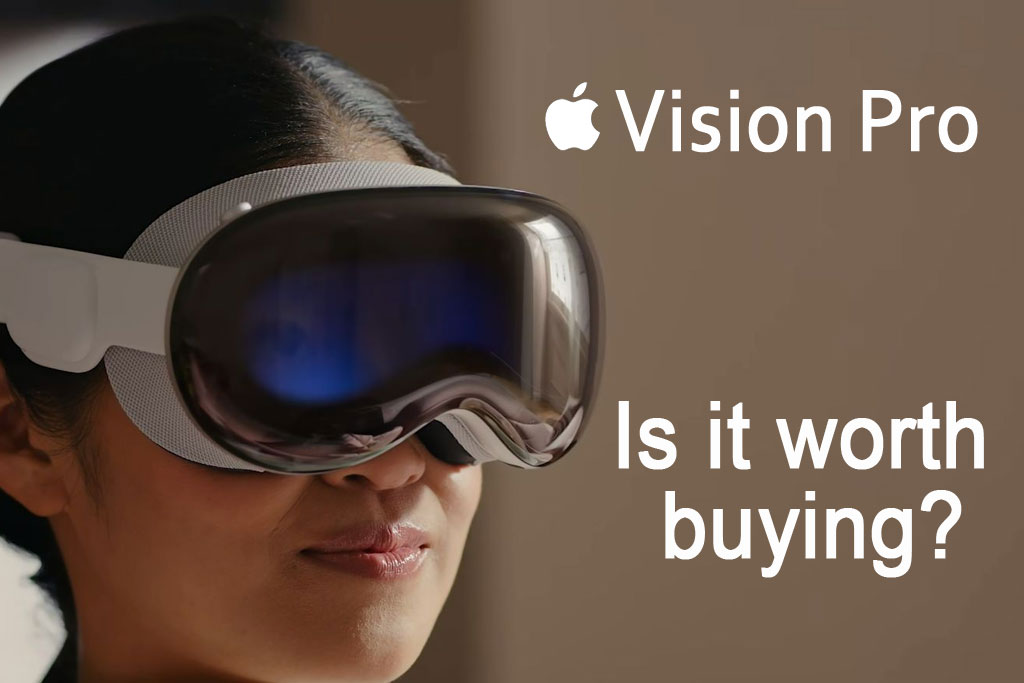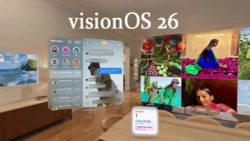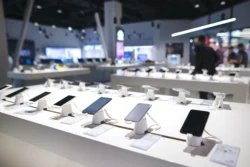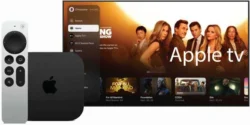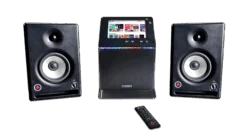The Apple Vision Pro, launched in February 2024, represents Apple’s bold entry into the mixed-reality market. Priced at $3,499, it’s one of the most expensive consumer headsets available, sparking debate about whether its advanced features justify the cost. This article explores its technology, market performance, competition, public reception, and future prospects to determine if it’s worth buying in 2025.
Cutting-Edge Technology at a Premium Price
The Vision Pro is a technological marvel, designed as a “spatial computer” that blends augmented and virtual reality. Its key features include:
- Display: Dual micro-OLED displays deliver over 4K resolution per eye, offering unparalleled visual clarity for virtual and augmented reality experiences.
- Interaction: Advanced eye-tracking, hand gesture recognition, and voice controls enable intuitive navigation, supported by an array of cameras and sensors for precise environmental awareness.
- Audio: Spatial audio speakers near the ears create immersive soundscapes that blend seamlessly with real-world audio.
- Design: A sleek aluminum alloy frame and laminated glass front house the technology, with a Solo Knit Band and Dual Loop Band for fit, though its 1.4-pound weight has been criticized for discomfort.
- Sustainability: Apple emphasizes eco-friendly design with 100% recycled aluminum, over 70% recycled yarn in bands, and 100% fiber-based packaging.
These features position the Vision Pro as a premium device, but its $3,499 price is significantly higher than competitors like the Meta Quest 3 ($499), PlayStation VR2 (~$1,000 with PS5), Xreal Air 2 Pro ($700), and Meta Quest Pro ($999). While its hardware and Apple ecosystem integration are unmatched, the cost raises questions about its value for most consumers.
Target Consumers
The Apple Vision Pro is targeted at a niche market of consumers who are interested in cutting-edge technology and are willing to invest in a premium product. Specifically, the target consumers include:
- Tech Enthusiasts and Early Adopters: Individuals passionate about new technology and eager to experience the latest innovations in mixed-reality. These users are typically willing to explore new platforms, even if the full potential of the device is not yet realized.
- Professionals: Workers in fields such as enterprise, the US federal government, and specific trades who can leverage mixed-reality for productivity, training, or simulations. However, as of mid-2025, the device is not yet widely adopted in business due to limitations in its current form.
- Affluent Individuals: Consumers with higher disposable incomes who can afford the $3,499 price and are looking for a premium, high-quality product. These users may value the device for its advanced features and integration with Apple’s ecosystem, even without immediate practical use cases.
- Privacy-Conscious Users: Individuals who prioritize data security and appreciate Apple’s approach to encrypting optical and behavioral data on the device, avoiding sharing with third parties.
The Vision Pro’s high cost and specialized features limit its appeal to a broad consumer base, making it a niche product for those who can afford and are excited by its potential.
Use Cases
The Apple Vision Pro offers a range of use cases across different domains, leveraging its spatial computing capabilities to blend digital content with the physical world. Its key use cases include:
- Work and Productivity:
- Virtual Workspaces: Users can create and interact with virtual screens and applications, enabling a flexible and immersive work environment. This is ideal for professionals who need to multitask or collaborate remotely.
- Business Applications: Although currently limited, there is potential for businesses to use the Vision Pro for training simulations, virtual meetings, and collaborative projects in spatial environments. Its adoption in enterprise settings is still developing due to the need for more robust applications.
- Entertainment:
- 3D Movie Viewing: The high-resolution micro-OLED displays provide a cinematic experience for watching movies in a virtual environment, offering immersion beyond traditional screens.
- Gaming: The Vision Pro supports gaming applications, delivering an immersive experience with its advanced display and interaction technologies.
- Interactive Content: Users can engage with interactive 3D content, such as virtual tours, educational simulations, and other multimedia experiences.
- Communication:
- Immersive Video Calls: With features like Personas, the Vision Pro enables lifelike video calls, enhancing communication and collaboration by creating a sense of presence.
- Marketing and Advertising:
- Location-Based Promotions: Businesses can create interactive virtual billboards that deliver targeted advertisements based on the user’s location, blending digital content with the physical environment.
- Targeted Advertising: The Vision Pro’s spatial computing capabilities allow for personalized ads and promotions, offering a new frontier for marketers.
- Education:
- Interactive Learning: Educational institutions can use the Vision Pro to create immersive learning experiences, such as virtual field trips, 3D models, and interactive quizzes, enhancing engagement and understanding.
While these use cases highlight the Vision Pro’s versatility, its high cost and developing app ecosystem limit its practical applications for many users.
Features and Usability Challenges
The Vision Pro is marketed for work, entertainment, and communication, with recent updates like visionOS 26 (announced in June 2025) introducing spatial widgets, AI-enhanced scenes, and shared experiences for users in the same room. Apple Intelligence integration enhances AI-driven functionalities across devices. However, the app ecosystem remains a weak point, with many popular apps not yet optimized for visionOS, limiting practical use cases compared to competitors like the Meta Quest 3.
Comfort is another concern. At 1.4 pounds, the Vision Pro can cause neck strain during extended use, a consistent issue noted by users. Apple is addressing this in a planned 2025 upgrade with new straps to improve comfort, but the current model remains less than ideal for long sessions.
Competitive Landscape
The mixed-reality market is highly competitive, with several devices offering compelling alternatives at lower prices. Below is a comparison of key competitors:
| Device | Price (USD) | Key Features | Best For | Downsides |
|---|---|---|---|---|
| Apple Vision Pro | $3,499 | Micro-OLED displays, eye-tracking, spatial audio, Apple ecosystem integration | Premium mixed-reality | High cost, limited apps, comfort issues |
| Meta Quest 3 | $499 | Snapdragon XR2 Gen 2, 2K resolution per eye, extensive app library, PC VR support | General use, gaming | Limited mixed-reality, short battery life |
| PlayStation VR2 | ~$1,000 (with PS5) | OLED display, haptic controllers, exclusive gaming titles | Gaming | Requires PS5, awkward controller straps |
| Xreal Air 2 Pro | $700 | OLED panels, USB-C connectivity, Nebula OS, lightweight AR glasses | AR experiences | Limited multitasking, short battery life |
| Meta Quest Pro | $999 | Productivity-focused, sleek design, immersive spatial audio | Professional use | Short battery life, VR work challenges |
Competitors like the Meta Quest 3 offer a broader app ecosystem and affordability, making them more accessible for gaming or casual use. The PlayStation VR2 excels in gaming for PS5 owners, while the Xreal Air 2 Pro provides a lightweight AR alternative. The Vision Pro’s superior displays and ecosystem integration are its main advantages, but its price and limited apps make competitors more appealing for many users.
Sales Performance and Market Reception
The Vision Pro has struggled commercially. In 2024, Apple sold approximately 420,000 units, well below the expected 700,000–800,000. By July 2025, Apple reportedly halted production due to low demand, relying on existing inventory for the year. Public sentiment is mixed: some praise its innovation, with moments of “magic” in 3D movie viewing or Mac integration, while others criticize its high cost, limited use cases, and comfort issues. High return rates and declining in-store demand reflect waning enthusiasm, with some calling it a commercial flop.
Future Prospects
Apple is actively addressing the Vision Pro’s shortcomings. A 2025 upgrade, potentially featuring an M4 chip for better AI performance and new straps for improved comfort, is expected to enter production soon. Looking further ahead, Apple plans a lighter, more affordable “Vision Air” (~$2,000) for 2027 and AR glasses for 2028, which could redefine the market. These developments suggest that the current Vision Pro may soon be overshadowed by more accessible models, potentially reducing its long-term value for buyers.
Is It Worth Buying?
Determining whether the Apple Vision Pro is worth its $3,499 price depends on individual needs and priorities:
- For Tech Enthusiasts and Professionals: If you’re deeply integrated into Apple’s ecosystem, have the budget, and want to experience cutting-edge mixed-reality technology, the Vision Pro offers unmatched hardware and potential for future updates. Its high-resolution displays and spatial computing capabilities make it a compelling choice for early adopters or professionals in fields like design or development.
- For Most Consumers: The high cost, limited app ecosystem, and comfort issues make it a tough sell. Competitors like the Meta Quest 3 or Xreal Air 2 Pro offer similar experiences at a fraction of the price, often with more practical applications. With Apple’s planned upgrades and more affordable models on the horizon, waiting may be the smarter choice for budget-conscious buyers.
The Vision Pro’s modest sales and halted production underscore its niche appeal. While it showcases Apple’s vision for the future of computing, it’s not yet a mainstream device. Unless you need its advanced features immediately, the evidence leans toward waiting for future iterations that address current limitations.
Conclusion
The Apple Vision Pro is a groundbreaking but pricey gadget that pushes the boundaries of mixed-reality technology. Its advanced displays, intuitive controls, and ecosystem integration are impressive, but its $3,499 price, limited apps, and comfort challenges limit its appeal. With competitors offering more affordable alternatives and Apple planning upgrades and cheaper models by 2027, many potential buyers may find it prudent to wait. For now, the Vision Pro is best suited for tech enthusiasts or professionals willing to invest in a first-generation product, while most consumers may find better value elsewhere.
